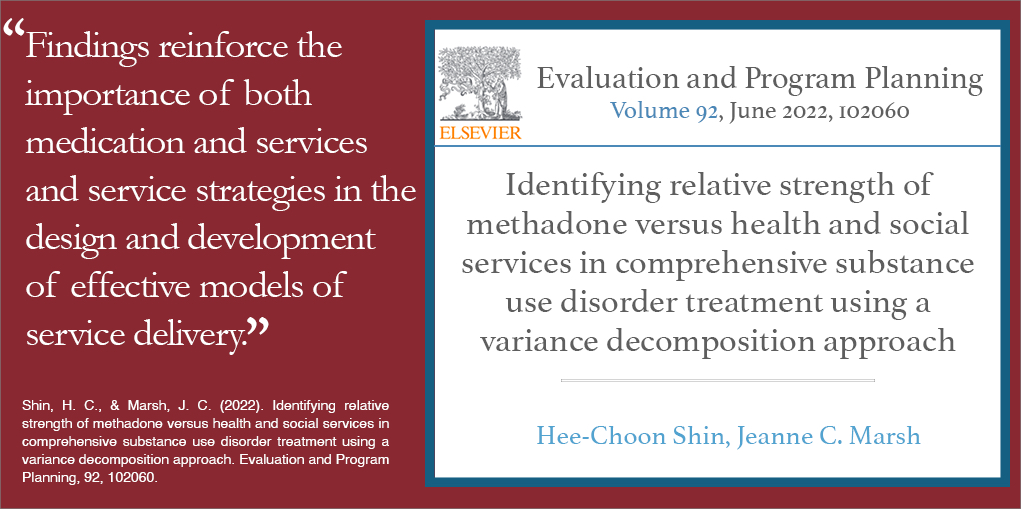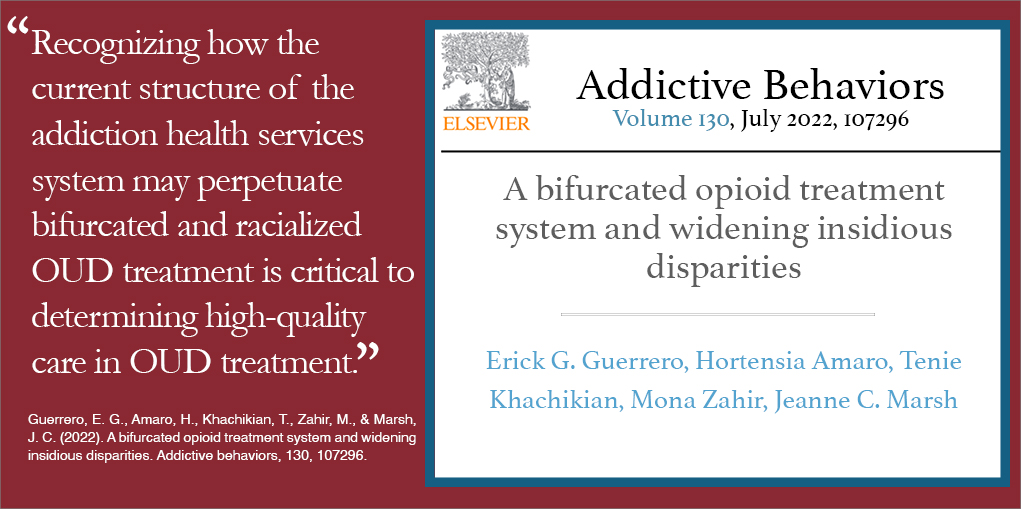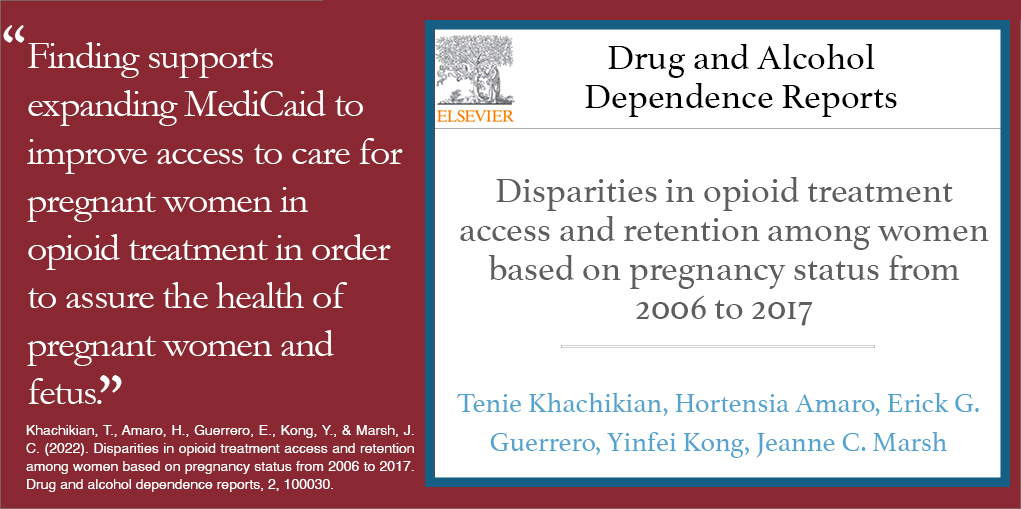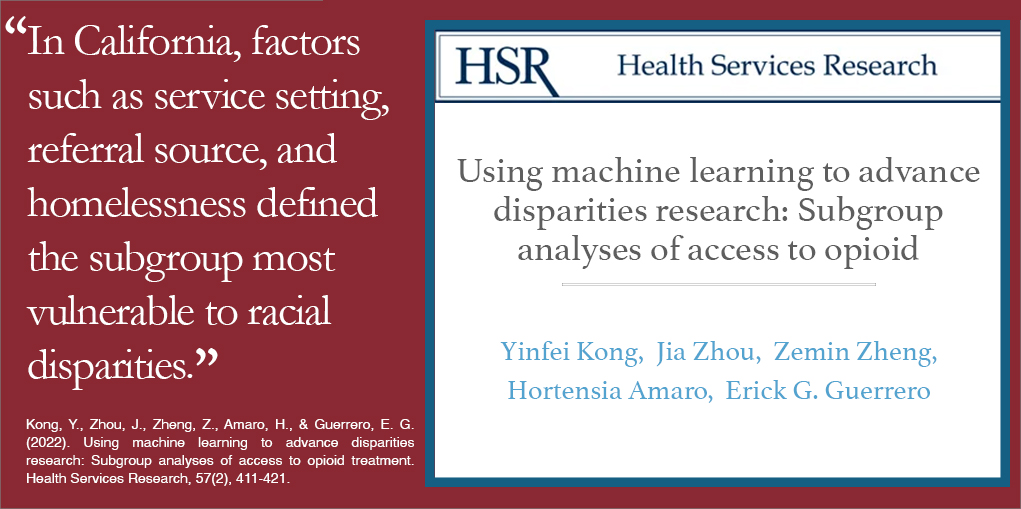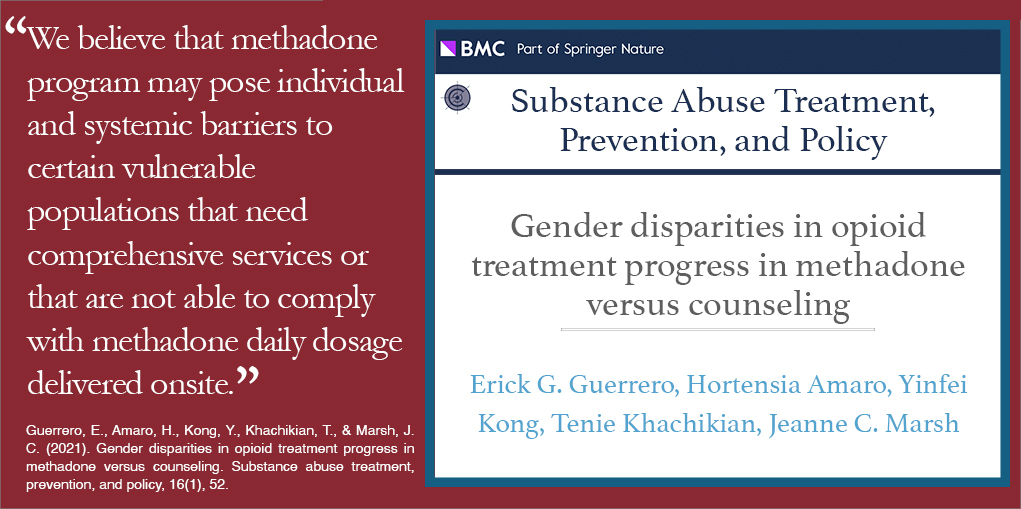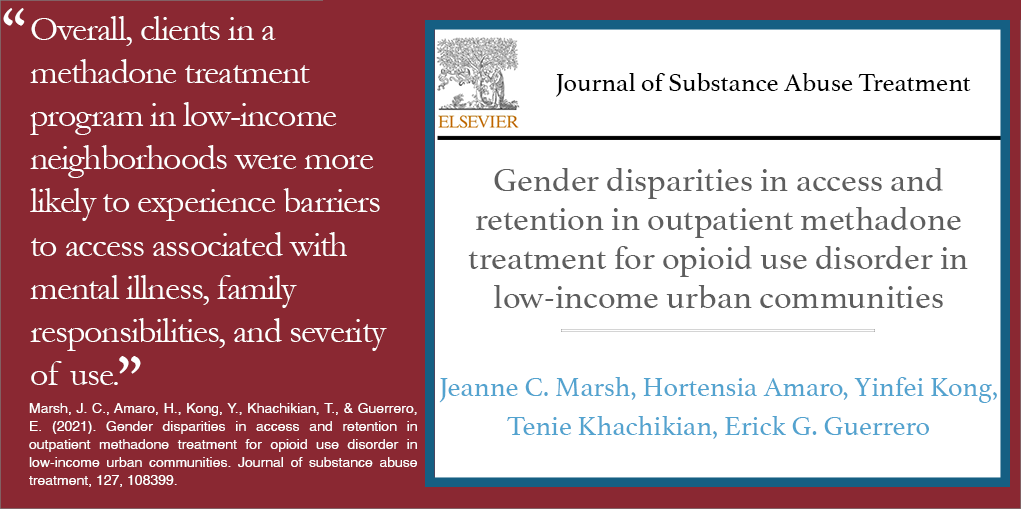Key Leadership & Workforce Characteristics Tied to Successful, Diverse OSAT Programs
Though outpatient substance abuse treatment (OSAT) has had a significant increase in referrals for racially/ethnically diverse clients, particularly those who are African-American and Latino, limited studies have delved into whether the racial and ethnic ratio of the OSAT workforce has kept up with the increased representation of clients of color. Creating a more diverse workforce has become a prime strategy of the Affordable Care Act (ACA) to reduce health disparities and raise national standards regarding culturally competent and linguistically appropriate care for minorities. Upper managers can pursue these strategies in their OSAT programs, yet little is known about how critical these program leaders are to diversifying their workforce.
In a study published in the Journal of Substance Abuse Treatment, Dr. Erick Guerrero explores the role that organizational factors, such as leader characteristics, play in creating a more diverse OSAT workforce over time. Previous studies suggest that developing racial and ethnic congruence between clients and treatment staff and utilizing cultural norms, a client’s native language and racial/ethnic history during interventions may help eliminate disparities and create a more conducive climate for responsive services such as family support groups. In addition, some statistics suggest that 70 percent of providers are White, female and older than a predominately young, male Latino and African-American client population; national samples indicate that 86 percent of counselors self-identify as White, 8 percent as African-American and 3 percent as Latino. With this in mind, program leaders face significant difficulty recruiting, retaining and developing diverse program staff who can implement culturally competent treatment practices.
Irrespective of an SAT leader’s cultural background, those who are culturally sensitive may exert the most influence over the implementation of culturally competent practices and are responsible for developing a qualified workforce that can meet the needs of clients. A diverse workforce not only improves clients’ access to treatment, but also advances minority clients’ retention. Cultural sensitivity, race and ethnicity, diversity and cultural competence are all complex, interrelated issues that link to organizational goal achievement. On the other hand education, licensure, tenure and race are often-clustered managerial characteristics that reflect professional and cultural preparation in conceptual models related to the implementation of innovative practices in OSAT.
According to previous studies, several factors are associated with the hiring of more diverse managers within OSAT programs like candidates’ greater likelihood to be college educated, professionally prepared and to possess extensive field experience. In addition, more racially/ethnically diverse managers may have greater access to minority professional networks from which to recruit. Because a larger percentage of minority candidates are available in urban populations compared to rural areas, it is important to account for region to examine managers’ diversification efforts. Education and professional experience are additional factors that indicate strong leadership from managers and treatment staff. Managers with increased education levels are more likely to understand and implement new and evidence-based practices within the workplace. In addition, professional licensure showcases a manager’s skill, professionalism and commitment to the field; those who are licensed must understand and utilize evidence-based practices and have familiarity with the implementation of culturally competent services for diverse clients. Another key management component is recruiting/hiring those with lengthier tenure because of their ability to navigate the institutional environment more efficiently, adept innovation management and likelihood to recruit and hire more diverse staff. In OSAT, the commitment of leaders to implementing evidence-based practices is instrumental, in addition to public funding, resources, professional accreditation and governmental mandates.
In this study, Dr. Guerrero analyzed secondary data of OSAT units from the National Drug Abuse Treatment Services Survey, which covered three waves of panel data collected in 1995, 2000 and 2005. Directors and clinical supervisors provided extensive survey responses regarding their staff composition; directors’ race/ethnicity, education, gender, licensure and tenure; and organizational accreditation, funding and licensing, via telephone and rigorous follow-up. Dr. Guerrero conducted a longitudinal analysis considering all the factors described and relying on a multilevel regression analysis to determine the following study results:
- African-American and Latino directors were positively associated with the percentage of African-American and Latino staff, respectively.
- The Latino staff model revealed a strong positive relationship between directors’ education level and proportion of Latino staff.
- Directors’ education level was positively related to the proportion of African-American staff.
- While directors’ tenure was positively related to the percentage of African-American staff, programs in which directors reported having a professional license had a negative relationship with this form of racial diversity.
- There was a statistically significant positive relationship observed in the percentage of both Latino and African-American staff from 1995 to 2000.
- With the exception of license, directors’ racial and ethnic minority status, education and tenure contributed above and beyond the main effect of other organizational factors to the percentage of Latino staff, but particularly to the percentage of African-American staff.
Overall, this study highlighted several noteworthy findings: (1) programs run by minority directors reported a larger percentage of racially/ethnically diverse staff; (2) programs with minority directors were primarily located in urban locales, which suggests a difference in the location of minorities compared with some program locations. That said, program location did not differ in terms of the relationship between racial/ethnic minority directors and larger minority representation, meaning staff diversity can be improved in both rural and urban settings; (3) higher education and greater managerial experience are key indicators of competency in OSAT for diverse leadership and add to increased levels of diversity for staff, yet tenure in these leadership positions were only positively associated with African-American staff; (4) programs with licensed directors were linked to decreased numbers of African-American staff; this is thought to be associated with decreased numbers of African-American licensed directors in government-run programs, which in turn ,have the highest rates of African-American staff; and (5) the education and tenure of diverse OSAT leaders contribute directly to the access, recruitment and retaining of a racially/ethnically diverse workforce; these factors also enhance cultural responsiveness within a treatment environment. These outcomes have implications for health administration policy changes and decision-makers within health who aim to eliminate health and service disparities for African-American and Latino clients.
To view the study in its entirety, please click here.
Source: “Workforce diversity in outpatient substance abuse treatment: The role of leaders’ characteristics”, Journal of Substance Abuse Treatment




